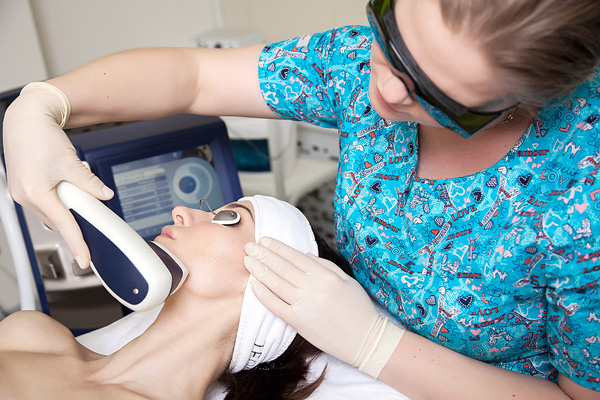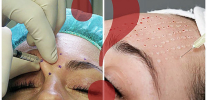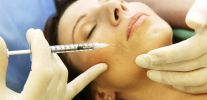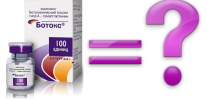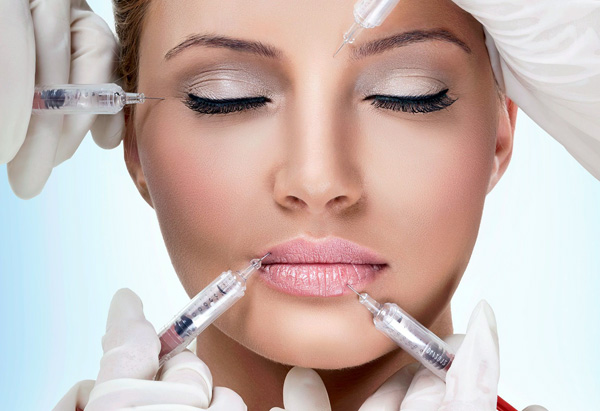
Among the patients of cosmetology clinics, there is a widespread opinion about a certain interchangeability of Botox (or its analogues) and hyaluronic acid. Especially often this mistake is made by those who have never undergone such procedures and do not fully understand the principle of action of these drugs - future patients believe that botulinum therapy may be better than injections of hyaluronan, or vice versa.
In fact, it would be a mistake to believe that one of these procedures is clearly preferable to the other. The principles of action of hyaluronic acid and botulinum toxin preparations are completely different, and therefore they are used in different cases. It is not entirely appropriate to even speculate what the differences between these means are - with the same success you can look for the difference between hard and hot. You can only discuss the differences in the effects obtained from their use. Where botulinum toxin helps, hyaluronan will not be sufficiently effective, and vice versa - in many cases when cosmetic facial problems are successfully solved by injections of hyaluronic acid, botulinum toxin will be either useless or less effective than such a filler.
In fact, to argue that any of these drugs is better or worse can only be applied to a specific situation with a particular patient and his problems. Only by evaluating the cosmetic defects themselves, the doctor understands the reasons why they arose, and can accurately tell which of the drugs will help the patient. And that means that this particular tool will be the best in this case.
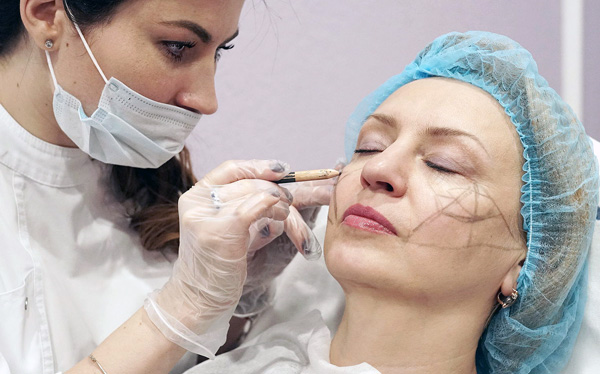
Only a specialist, having assessed the patient's problem areas, can decide which of the drugs will give positive results in solving cosmetic defects.
There are also situations in which complex treatment using both botulinum toxin and hyaluronic acid is required. But in these cases, each of the drugs solves a very specific problem, and together they complement each other. There is also no need to talk about any superiority of one remedy over another.
On a note
Here you can give a simple analogy: which is better - an evening dress or a swimsuit? Agree, the question is controversial. If you do not specify where we are going - to the beach or to a film festival - choosing a suitable costume will not work. And if we go to Cannes for a week, then we will need both. Similarly, with the choice of cosmetology method: the best of them will be the one that successfully solves a specific problem in a particular patient.
And in fact, the patient does not need to find out exactly what procedure he needs. This is the task of a cosmetologist who evaluates the condition of the skin of a person who has contacted the clinic, the causes of its defects, selects the most suitable method by which these defects can be removed and is responsible for this choice. And we can figure out how this choice is made in order to further understand the logic of the doctor’s work.
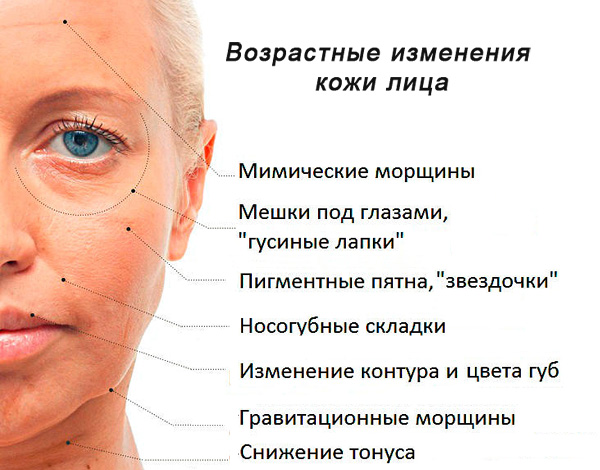
The choice of the drug depends largely on the causes of skin deformation: facial wrinkles are better amended by botulinum toxin, and static wrinkles, loss of volume and a decrease in skin tone are corrected by hyaluronic acid fillers.
Fundamental differences between botulinum toxin and filler injections
Preparations of botulinum toxin and fillers based on hyaluronic acid have a different principle of action and are used to solve various problems. However, visually the effect of their use in some cases may be similar.
So, various drugs of botulinum toxin - Botox, Dysport, Mioblock, Xeomin, Relatox - lead to immobilization of the muscles into which they were introduced.In the future, due to the fact that the muscle does not contract, even if a person expresses certain emotions, it does not wrinkle the skin, and, therefore, does not aggravate existing wrinkles and does not form new ones.
Thanks to this action, botulinum toxin preparations are used to combat those cosmetic defects that are caused precisely by muscle contraction.
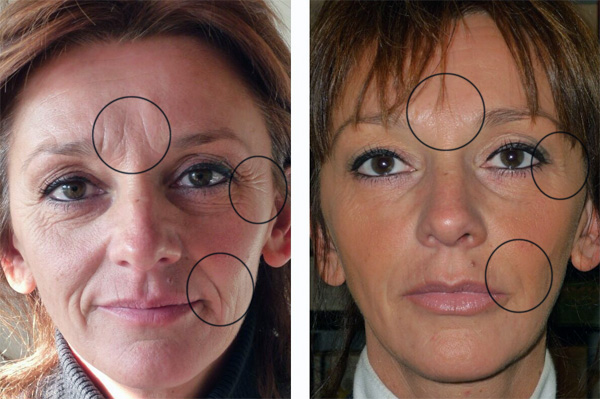
Botulinum toxin “turns off” the muscle, it is used to eliminate dynamic wrinkles caused by active facial expressions.
The principle of action of hyaluronic acid is completely different. It is a natural filler of the skin, providing its volume, a certain structure of the arrangement of cells and the course in different layers of various biochemical processes. Injections of hyaluronic acid are carried out either in cases when, for various reasons, its amount in the skin decreases, which leads to characteristic defects, or if necessary, to obtain a certain effect that arises due to the biological activity of this substance - create centers for the formation of fibroblasts, ensure dermis fullness, achieve loosening collagen fibers. All these actions in combination provide a visual and physiological improvement of the condition and functioning of the skin.
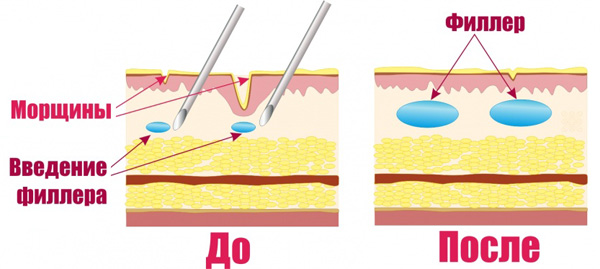
The effect of hyaluronic acid fillers on the skin.
Obviously, due to such differences in the principle of action, the preparations of these agents are used in different cases.
In which cases Botox is used, and in which - hyaluronic acid
The main area of application of botulinum toxin in cosmetology is the elimination of so-called dynamic wrinkles, that is, those that occur at the site of muscle contraction and wrinkling of the skin caused by such a contraction. As a rule, with its help are eliminated:
- Interbrow wrinkles;
- Frontal wrinkles;
- Wrinkles around the eyes.
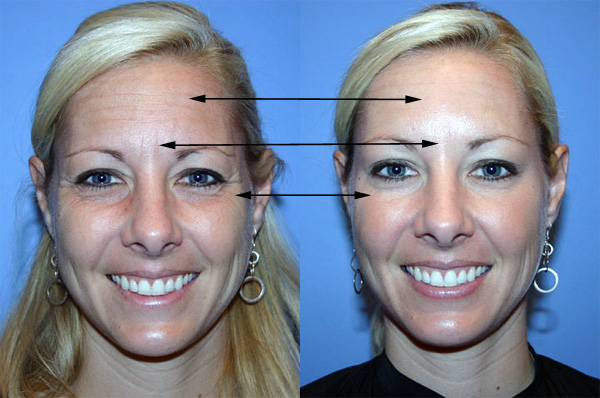
Botox is most often used to eliminate wrinkles on the forehead, around the eyes and in the area between the eyebrows.
On a note
If you try to inject hyaluronic acid in such dynamic wrinkles instead of Botox or its analogues, it will only aggravate the severity of the defect: the skin at the wrinkle site will become denser and “more magnificent”, and the wrinkle itself will be deeper and more pronounced.
Also, with the help of botulinum toxin, eyebrow angles are lifted, the position of the lower jaw is corrected, lips are raised or, conversely, the corners of the lips are lowered. That is, Botox corrects those features of the face that are caused precisely by muscle activity.
Botulinum toxin is also used to eliminate pathological defects - blepharospasm and hemifacial spasm, cervical dystonia, strabismus, fresh scars at the site of wounds or sutures from surgery. In some cases, it is also used to smooth too bumpy muscles in different parts of the body.
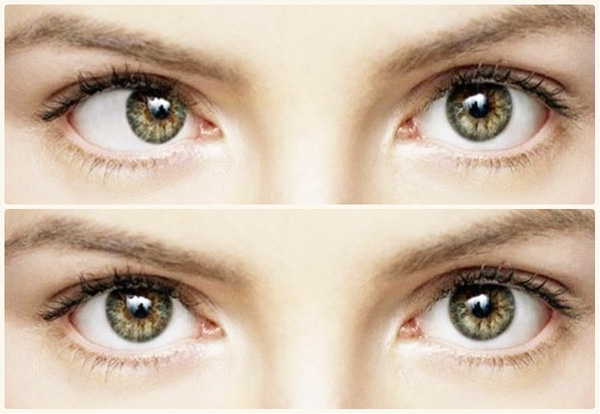
Botulinum toxin is used in the treatment of many pathologies, including strabismus.
Hyaluronic acid is also used to eliminate skin defects. As a rule, with its help:
- Eliminate age-related wrinkles caused by skin drying and loss of various components, including crow's feet, rabbit wrinkles, parotid folds, earlobe wrinkles, nasolacrimal groove, circular neck wrinkles, decollete wrinkles, puppet wrinkles, nasolabial folds purse-string wrinkles;
- Fill wrinkles caused by sagging skin and loss of elasticity;
- Correct the severity of the cheekbone, the shape of the lips and chin, the general oval of the face;
- Lip slightly enlarged;
- Eliminate dents on the skin caused by loss of hyaluronan.
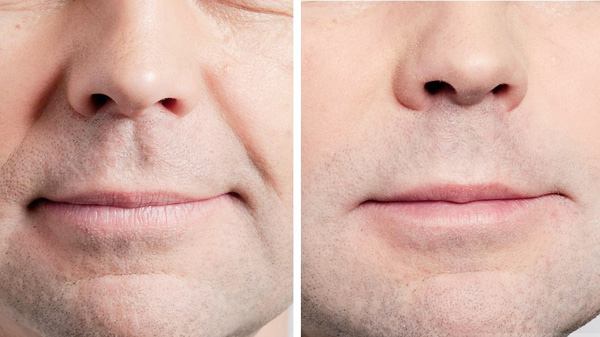
With the help of hyaluronic acid, the nasolabial folds are well corrected.
As you can see, most of the indications for the use of botulinum toxin and hyaluronan preparations do not overlap. You can not use Botox to eliminate wrinkles caused by sagging skin, as it will not be possible to get rid of typical dynamic wrinkles, for example, between eyebrows with hyaluronic acid injections.That is, simply choosing which of these means is “better” is incorrect - you need to choose the drug that will solve the specific problem.
On a note
Problems that require the use of hyaluronic acid occur more often and are present in almost all patients in cosmetology clinics. If I may say so, they are “global” - with them the appearance and structure of the skin on the whole face worsens, they are more clearly evident. The problems solved by botulinum therapy are "point-like" and not so critical. Therefore, hyaluronic acid as a whole is more in demand and allows solving more important problems for the patient. Moreover, sometimes hyaluronic acid not only eliminates defects, but also allows for limited facial plastic surgery. Lip augmentation and contouring are a clear example.
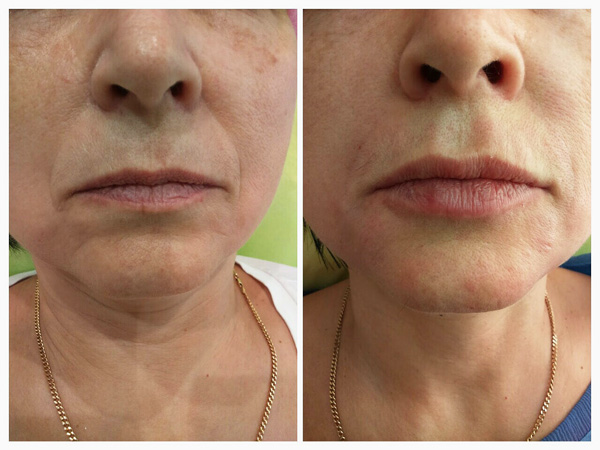
Hyaluronic acid is able to correct the shape of the lips and slightly increase them.
However in some cases, botulinum toxin and hyaluronan preparations are used together. For example, if you need to eliminate dynamic wrinkles on thinned, sagging skin. In this case, first with the help of Botox, the muscles are deactivated, the contraction of which causes the appearance of a specific wrinkle, and then a hyaluronic acid preparation is introduced into the skin in this area to biorevitalize the skin and restore its structure.
It is important to understand that such a comprehensive treatment is quite complex and expensive, it is not carried out in one procedure. Nevertheless, these methods themselves are, in principle, compatible and in combination can solve problems that cannot be eliminated with just one of the drugs.
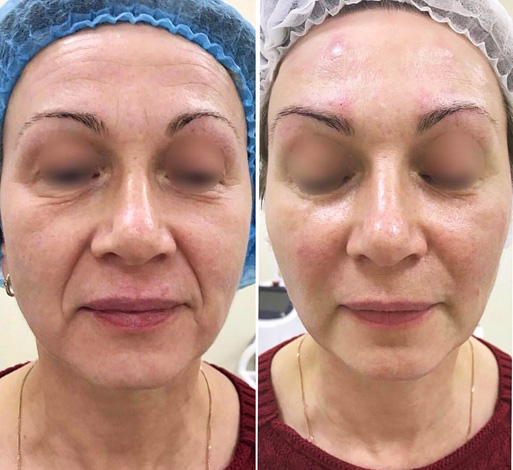
Complex use of botulinum toxin and hyaluronan: Stage 1 - correction of facial wrinkles between the eyebrows and the frontal area, as well as the corners of the eyes with botulinum toxin; Stage 2 - with the help of hyaluronic acid, nasolabial folds and wrinkles under the eyes were corrected.
Feedback
“I made myself Botox and hyaluron. After the hyaluron, the effect is more noticeable, the eyes stand out more, the skin is clean, in general the younger is stronger)) Plus, it is pricked less often. But without Botox in any way - a hyaluron will not smooth out a wrinkle in the eyebrow. Therefore, it is necessary to inject Botox once a year, once every two years - to go for biorevitalization. By the way, this is also taken into account - the hyaluron lasts longer. Plus, they can’t be pricked on the same day - at least with a difference of a week, that is, it’s possible to combine them, but for each procedure you need to choose a day separately. ”
Inga, from correspondence on the forum
As you can see, it makes no sense for the patient to decide which of the procedures will be better for him. Here the decision should be made only by a cosmetologist. However, a situation is possible when the patient has a complex of cosmetic defects, some of which require botulinum toxin therapy, and the other part requires hyaluronic acid injections. And it is precisely in the case when the patient cannot afford the whole complex of such procedures (for example, for financial reasons or for health reasons), he chooses which ones to limit himself to and which part of the problems to solve. Here financial criteria or safety procedures come to the fore.
Which procedure is cheaper
It is impossible to compare the price of Botox injections or, say, Disport with the cost of procedures with hyaluronic acid, since prices are largely determined by the complexity of the tasks that are solved by these means. However, in general, botulinum therapy is more accessible due to the fact that it can be carried out in various amounts of the drug.
So, the cost of injections of botulinum toxin is determined by the number of injected solution units per procedure. Prices for such treatment are indicated just from the calculation of the cost of introducing 1 unit of the drug. On average, they are:
- 260-320 rubles per unit of Botox;
- 230-280 rubles per unit of Relatox;
- 180-220 rubles per unit of Disport.
These prices include the cost of the drug and the cost of the doctor's work.
For one botulinum treatment, the doctor introduces from 10 to 200 units of the drug. 10-15 units are enough to eliminate one pronounced wrinkle, 30-35 to remove several wrinkles and clean, for example, the entire forehead with a nose bridge, more than 60-70 units for complex treatment of the entire face, neck and décolleté.
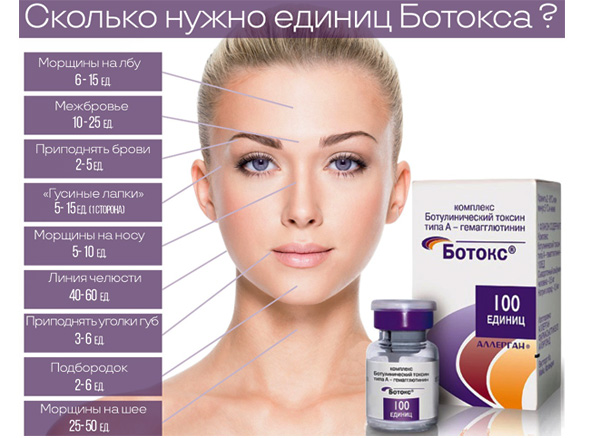
The standard number of Botox units for the correction of the face and neck.
In most cases, within one procedure, the doctor injects 15-25 units of the drug. Therefore, its cost is about 3500-6000 rubles.
Hyaluronic acid treatments are more expensive. So:
- The cost of mesotherapy with hyaluronic acid starts at 7,500 rubles and averages 10-12 thousand per procedure;
- Biorevitalization costs from 10,000 rubles per procedure;
- Prices for facial contouring start from 12,000 rubles.
In all cases, the cost of the drug is included in the price of the work.
Thus, we can conclude that, in general, procedures with Botox and its analogues are cheaper. However, fully relying on price, as a decisive factor, is not always advisable. For example, more expensive biorevitalization can give a much more noticeable and pronounced effect than botulinum therapy. And therefore sometimes it makes sense to pay more, but also to get the best result.
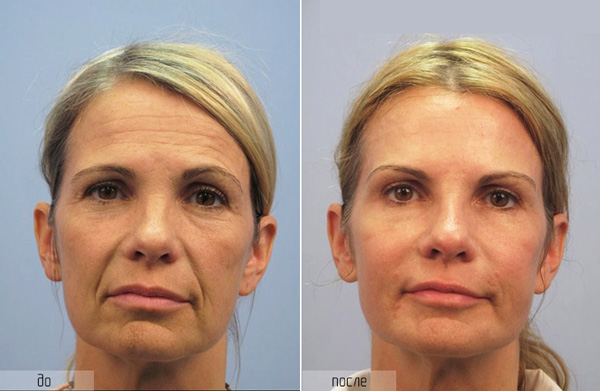
An integrated approach to getting rid of wrinkles gives a more pronounced effect, but the cost will be higher.
In addition, it is important for the patient to know how different the duration of action of botulinum toxin preparations and hyaluronic acid-based products is. Average, the effect after Botox injections passes through 8-10 months. The effect of high-quality biorevitalization of the skin with hyaluronic acid persists for 15-16 months. That is, when calculating the cost, you need to consider that less expensive botulinum therapy will have to be carried out more often.
Are Botox and hyaluronic acid injections safe and how painless they are?
Also, botulinum therapy and the use of hyaluronic acid differ in safety and a set of side effects after their administration.
For example, hyaluronic acid injections are more often painful. This is due to the structure of its molecules and the increased viscosity of the drugs, and the more effective the product, the more likely it will cause pain when introduced into the skin. However, here the likelihood of such adverse events depends to a large extent on the professionalism of the doctor, competent dilution of the drug and the correct selection of needles. In a high-profile specialist, injections of both Botox and hyaluronan are approximately equally painless.
Contraindications to the use of botulinum toxin and hyaluronic acid preparations are generally similar. These are oncological diseases, acute infectious diseases, a tendency to keloid scarring of the skin, pregnancy, lactation, and an allergy to the drug itself. In this regard, botulinum toxin and hyaluronan are practically no different.
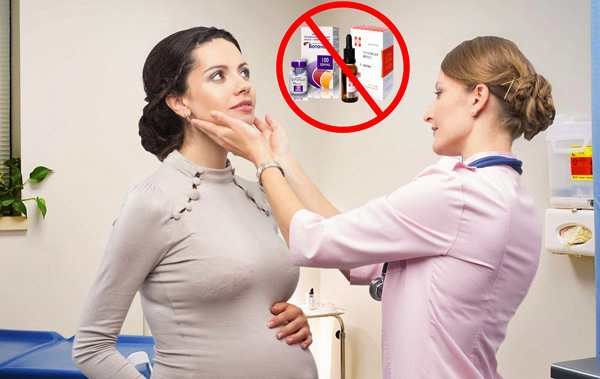
In pregnancy, both Botox and hyaluronic acid are not recommended.
A few words about possible complications from the procedures
Botulinum toxin preparations can be considered more "risky" in use than drugs with hyaluronic acid.
So, after the introduction of botulinum toxin, deactivation of unwanted muscles and facial expressions are possible, the face becomes like a waxy one, or the effects of “Mephistopheles eyebrows”, “dull face” and the like occur. Also, due to the action of botulinum toxin, ptosis sometimes develops (the eyelid drops), eyebrows rise, and the eye muscle is immobilized. In some cases, the patient after the procedure cannot blink or swallow.
Other side effects of botulinum therapy are:
- Possible allergies;
- Flu-like syndrome;
- Swelling on the face at the injection site.
An allergic reaction can be one of the side effects of botulinum toxin. Some of these effects quickly disappear, while others (for example, ptosis) can persist for several months.
Side effects after the introduction of hyaluronic acid develop less frequently, and they themselves are less diverse. These include:
- Allergies
- Redness, swelling and nodes at the injection site, persisting for several days;
- Unpleasant sensations - itching, tingling, pain at the injection site.
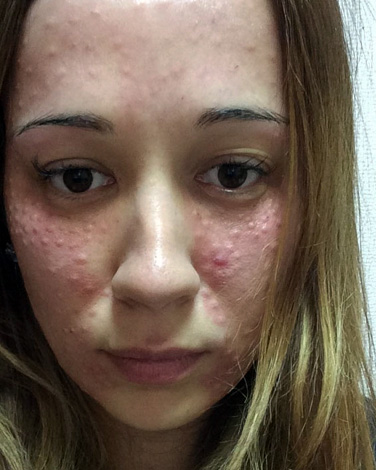
The consequences of the introduction of hyaluronic acid in the form of redness and nodes at the injection site.
It is important that all side effects of hyaluronic acid treatments go away quickly.
On a note
In the entire history of the use of botulinum toxin, more than 20 cases of death of patients from anaphylactic shock caused by an allergy to the drug are known. For hyaluronic acid, such cases were not observed, since it is a normal component of the dermis and other body tissues.
In general, we can assume that hyaluronic acid is safer than botulinum toxin, but when contacting a good doctor, this difference is not significant.
Feedback
“After Botox, the result is faster and more pronounced than after hyaluronic acid. The wrinkle almost disappears in a day. And those problems that hyaluron solves, in principle, can be glossed over with cosmetics. But after Botox, I always have unnatural facial expressions, even though the doctor I go to inject with is very cool. I don’t notice any changes myself, but my friends after each break-up are asking all the time - what's wrong with you? I think this is due to the fact that I laugh a lot, but when you laugh it is very clear that some muscles are turned off. Therefore, I decided for myself: wrinkles from laughter are not a problem, let them be, but everything is natural. But to improve the skin with a hyaluronic is useful. ”
Alena, Moscow
How to combine botulinum therapy with filler injections
Finally, in some cases, in order to completely solve certain cosmetic problems, one generally cannot choose between Botox and a hyaluronic acid preparation — these agents should be used together. As a rule, such a combination occurs in the presence of dynamic wrinkles and a general deterioration of the skin, when only botulinum therapy does not improve the appearance of the skin, and hyaluronan alone does not help get rid of wrinkles.
In this case, botulinum therapy is first carried out sequentially, and then hyaluronic acid injections. The reverse sequence will be erroneous: if hyaluronan is first administered, and then botulinum toxin is added, there is a risk that the effect of hyaluronic acid will appear to a lesser extent at the wrinkle site, or not at all.
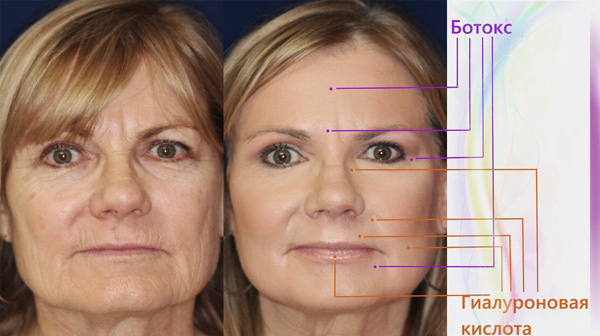
In some specific cases, Botox and hyaluronic acid are used together, but not simultaneously, to comprehensively solve cosmetic defects of a patient.
With the correct sequence, due to the action of Botox, the wrinkle disappears, or decreases as much as it was formed by the contracting muscle, and after that the doctor can already assess how much hyaluronic acid must be introduced, including in this area, to completely remove the defect on the skin.
All this is relevant for combining botulinum therapy with different procedures involving the use of hyaluronic acid - mesotherapy, biorevitalization, contour plastics.
It is important that for all drug compatibility, at least 3-4 weeks should pass between Botox administration and hyaluronic acid injections, ideally about 2 months. During this time, possible side effects from the action of botulinum toxin completely disappear and the skin takes on the form that it has without constant wrinkling with muscle contraction. If you try to enter hyaluronan earlier, you can make a mistake in its dosage, which will lead to undesirable cosmetic consequences.
Obviously, Botox and hyaluronic acid are not injected at the same time.This would violate safety requirements - after botulinum therapy for a few weeks, no invasive cosmetic procedures should be performed.

Experts argue that the time interval between Botox and hyaluronic acid injections should be about 2 months.
Finally, in some cases, skin problems can be solved either by replacing or supplementing botulinum therapy and hyaluronic acid injections with other means and methods.
What else are the options for correcting wrinkles: from gentle to radical
By decision of the doctor, the use of such tools and methods may be included in the complex of cosmetic procedures:
- Chemical peeling is the main way to eliminate superficial wrinkles, the depth of which is less than the thickness of the skin. They appear due to the loss of skin elasticity and are eliminated by chemical peeling by updating the epidermis and strengthening the dermis;
- Laser skin remodeling providing a result similar to chemical peeling;

Laser skin rejuvenation restores it, increasing elasticity and tone.
- The use of various fillers that stimulate the function of fibroblasts - L-lactic acid and calcium hydroxyapatite;
- Filling deep wrinkles with permanent fillers - autologous fat, autologous fibroblasts, polymethyl acrylate;
- Mesothreads that provide a lift to weakened skin;
- Thermolifting, in which there is a tightening and smoothing of the skin, activation of fibroblasts in it due to warming;
- Microcurrents providing the same effect as thermal lifting.
In some cases, these methods may be more preferable than using hyaluronic acid, sometimes they supplement the use of fillers and botulinum toxin - it all depends on the particular patient and his skin condition.
All this means that the choice of a method or a set of methods for solving cosmetic problems in a patient should be made by a specialist who understands the reasons for the development of certain defects and can accurately predict which procedure will produce the desired result. Therefore, instead of sitting at home and independently deciding which procedure to carry out, it is better to go to a cosmetologist at least for a consultation and find out exactly which drug and which procedures will help solve specific cosmetic problems.
Botox and hyaluronic acid - links of one chain in the elimination of cosmetic defects
Expert advice: what is important to know about injections of Botox, hyaluronic acid, biorevitalization
An interesting video about the types and principles of the “beauty injections”

